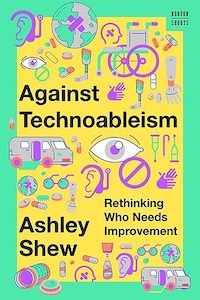Note: Originally posted on https://jenrohrigdesign.com/
The way we talk about disability matters but the complicating factor is that different people and different groups have different preferences. People with intellectual disabilities tend to prefer person first language and the concept of “see ability not disability”. This is because of the long history of being dismissed and looked down on by everyone including those with physical disabilities. If you’ve ever used the phrase “I may have a physical disability but my brain is fine” you’ve contributed to. On the flip side people with physical disabilities and some developmental disabilities (like autism) tend to prefer identity first language and usually (but not always) don’t find the use of the word disabled offensive. Some don’t like to use the word disabled but instead prefer to only use the name of their identity – Deaf or Autistic for example. None of this is 100% true all of the time but in general it’s a good baseline to understand.
When we talk about accommodating disabilities there is often a focus on the deficits that the accommodations are helping with. This individual can’t hear so they need closed captions or ASL interpreters; this individual can’t walk to they need a wheelchair; and so on. This is especially true in education settings for children who have IEPs. Because of the way school systems focus on their budgets they tend to focus on how much something will cost. This results in parents having to fight to get the accommodations their child needs by emphasizing their disabilities in order to prove that the need exists, instead of being able to focus on how the accommodations would help them succeed in school. This battle often repeats each year because school administrations will want to take away accommodations if they see an improvement. The argument the school will use is that the child has improved so the accommodation obviously isn’t needed anymore, ignoring that the child is doing better with the accommodations and taking them away would mean not doing as well.
Because there is such an emphasis on deficits in education there ends up being a push for “seeing abilities not disabilities”. It becomes especially true for people with intellectual and developmental disabilities as they fall behind their peers in school. Sometimes this is the case before they even start school when doctors tell parents that their children won’t amount to much because of their disabilities. So naturally organizations like Special Olympics will focus on proving what people with intellectual disabilities are capable of doing rather than what they can’t. Special Olympics is of course focused on sports so there is an emphasis that sports don’t see disability. There’s nothing really wrong with this thinking in a general sense. It is important to see that a person can be capable of things and not make assumptions based on their disabilities. That’s why people act so amazed when a person with Down Syndrome completes a Marathon. There’s an assumption that they can’t possibly run a marathon, when the truth is they often can with enough training and enough support just like anyone else.
Of course limitations will always exist (even without disabilities in the mix). The key is not allowing other people to enforce false limitations on a person, but also acknowledging the real limitations that exist. Because, ignoring a disability completely will cause harm if not acknowledged. It’s also a problem when people say “if this person with a disability can do this why can’t you?” ignoring that everyone’s abilities actually are different. That’s why my preference is to see the disability along with the ability. I’m still hard of hearing regardless of having a hearing aid. My hearing is not 100% – there will still be times I don’t hear something and people will need to repeat themselves. I also still need closed captions to watch videos or TV shows – the sound is not clear enough to hear everything and there is usually background noise. So yes I still need people to “see my disability, not just my abilities”. But I do think we can change how we talk about our disabilities so that it’s not always about the deficit. Just saying I need people to repeat themselves or captions should be enough without having to explain that I am hard of hearing. There shouldn’t be a reason to have to prove anything. Access needs should be understood and accepted across the board.
Additional Reading
“I Shouldn’t Have to Dehumanize My Son to Get Him Support: Instead of focusing on the challenges facing disabled people, we should emphasize goals.” – by David M Perry at “The Nation”
“The Problem of Intellectual Ableism” posted by me on this blog.
“About Limits” posted by me on this blog.
